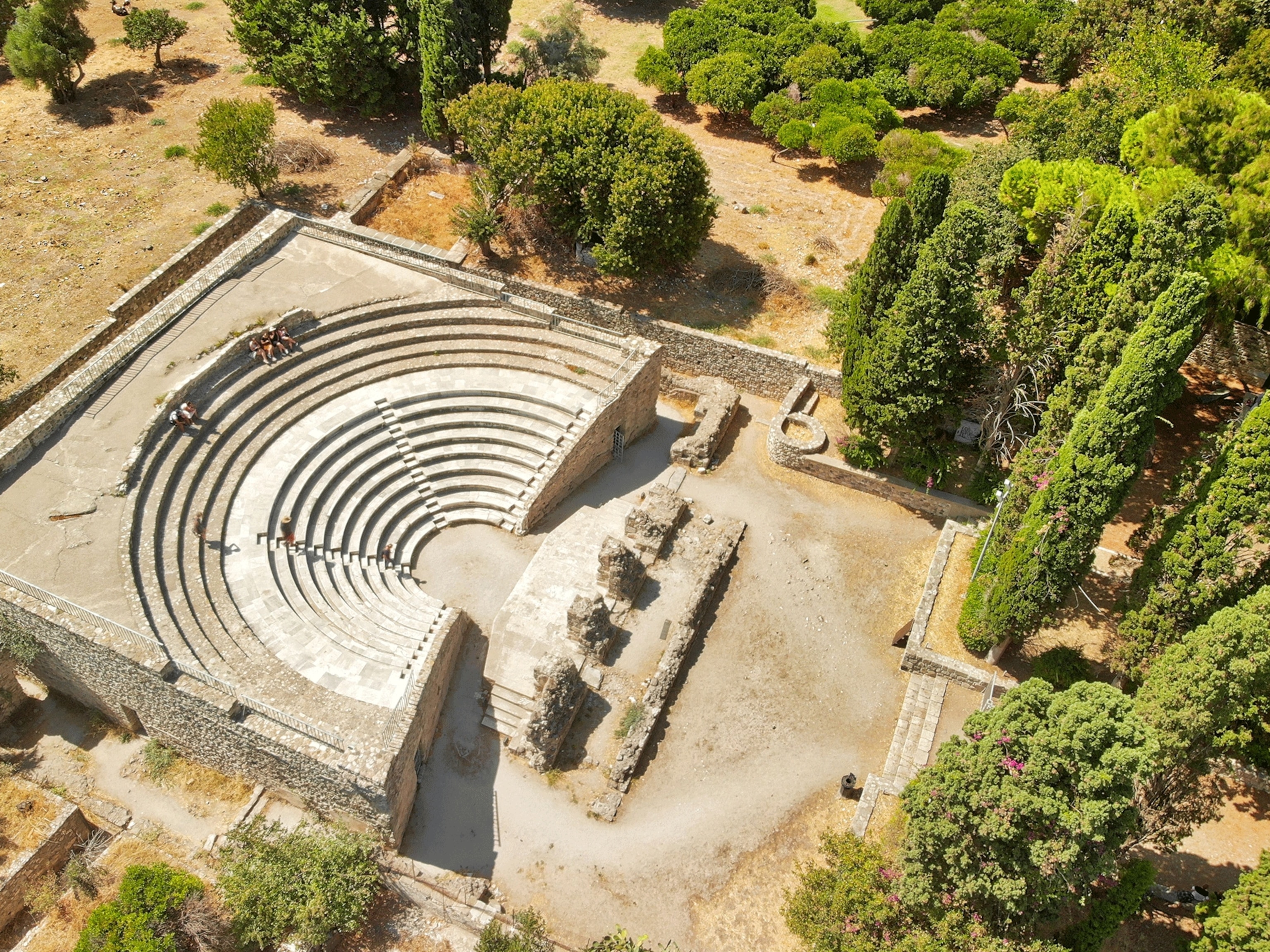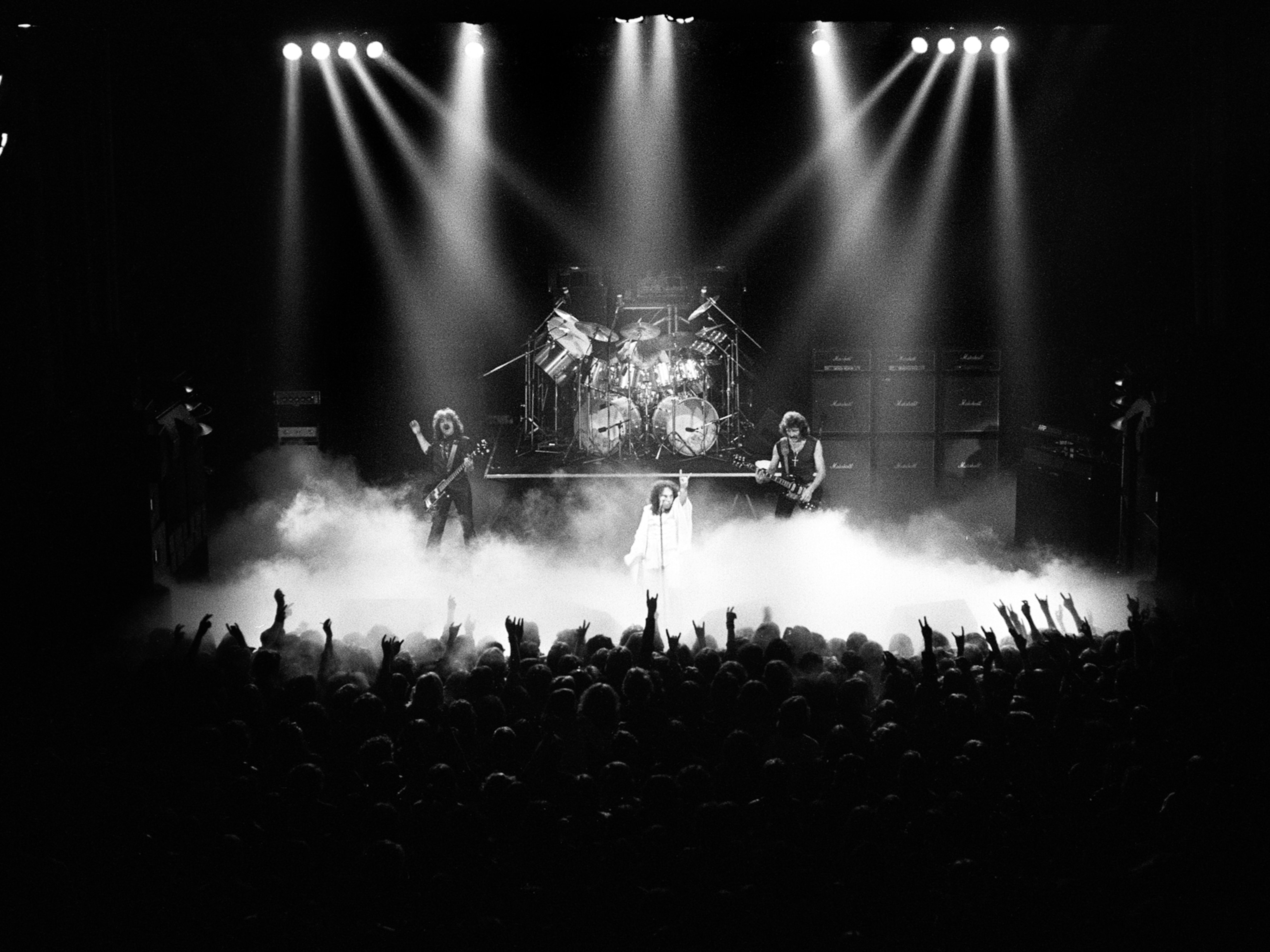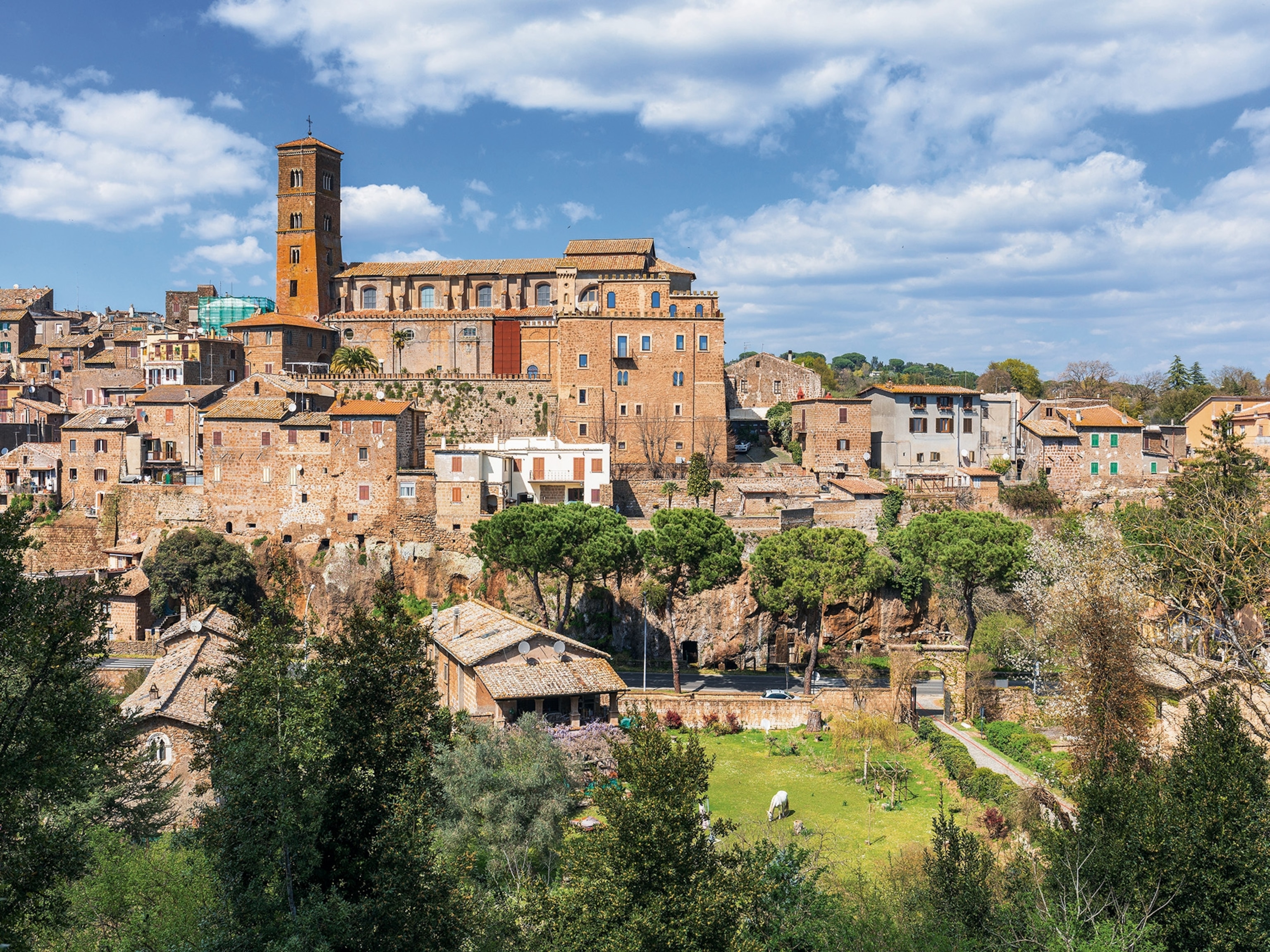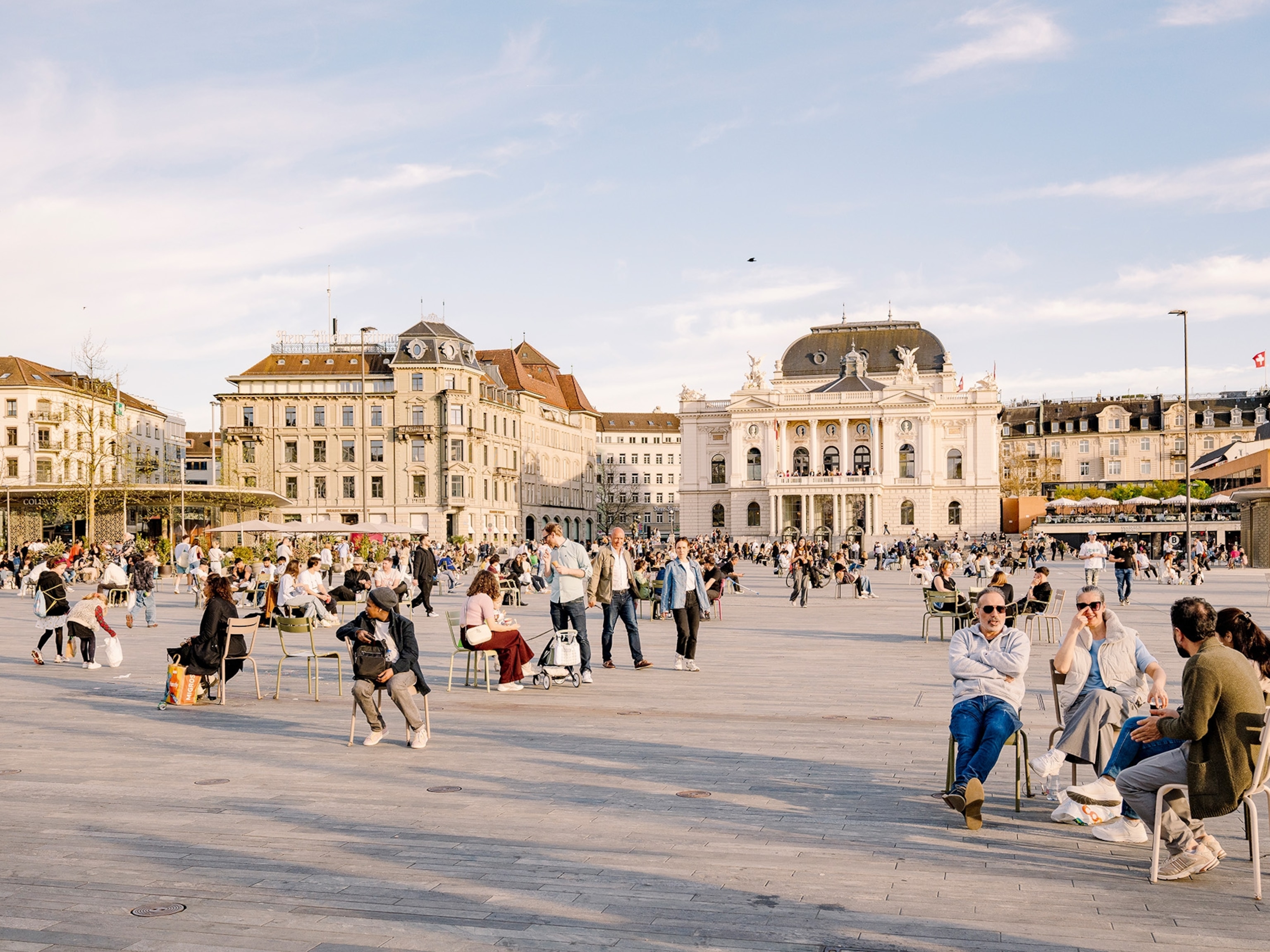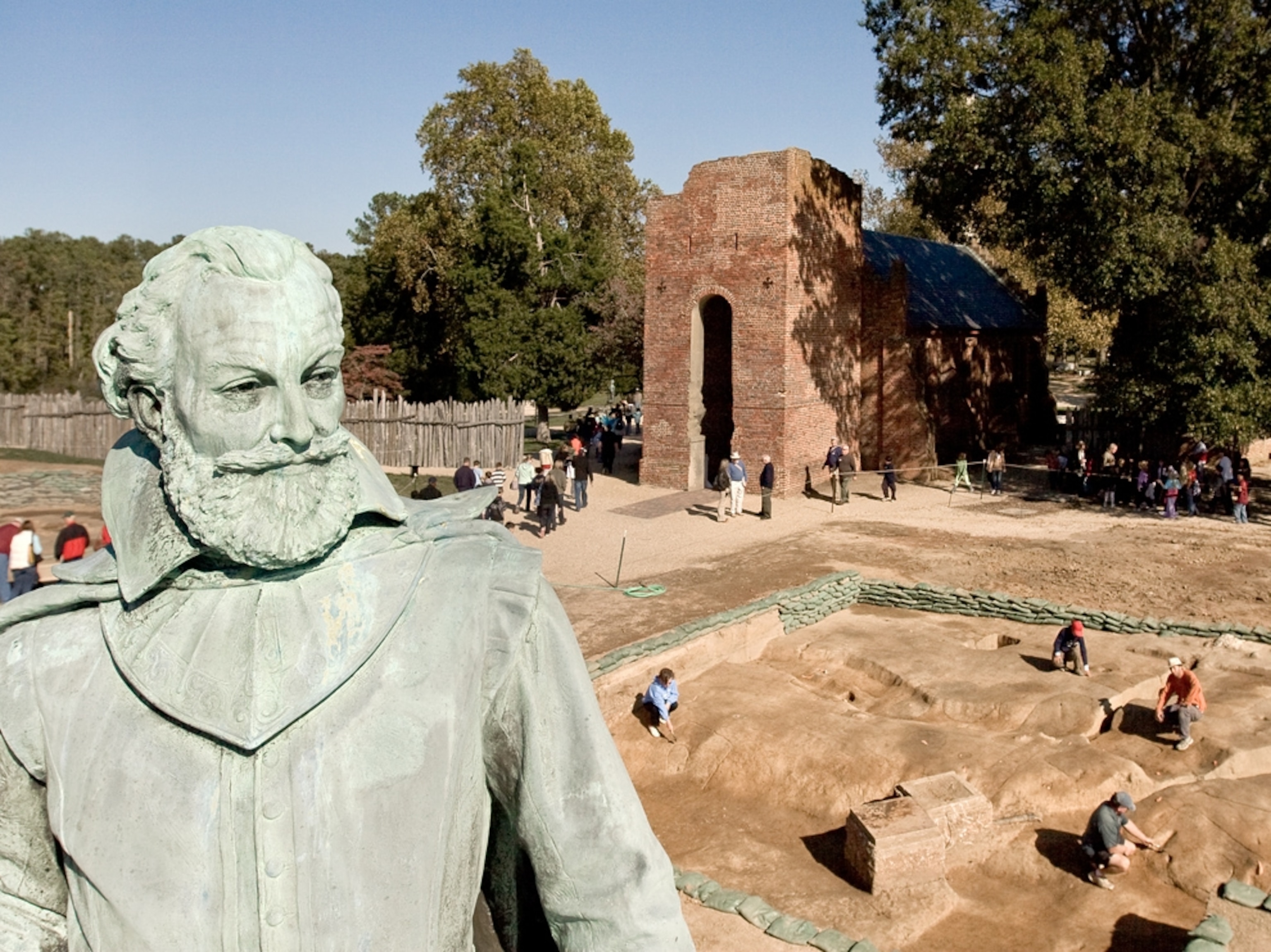
Pocahontas's Wedding Chapel Found at Jamestown
Mud-walled structure was site of 1614 nuptials.
The remains of the church where Pocahontas married an English tobacco farmer have been discovered at Jamestown, Virginia, the first permanent English settlement in the New World, archaeologists announced in October.
In the narrow, mud-walled, and well-lighted church, the daughter of Chief Powhatan and John Rolfe wed in spring 1614, ushering in eight years of peace between the colonists and the Powhatan Indians, according to William Kelso, director of archaeology for Historic Jamestowne. The public-private partnership works to preserve and interpret the settlement site.
(Explore an interactive guide to colonial Jamestown in National Geographic magazine.)
The nuptials were documented in a letter written by Sir Thomas Dale, governor of Virginia, from Jamestown in June 1614.
"Powhatan's daughter ... is since married to an English gentleman of good understanding, as by his letter unto me containing the reasons for his marriage of her ... another knot to bind this peace the stronger ... her uncle gave her to him in the church," Dale wrote.
In a 1610 written account, Jamestown colonist William Strachey described the chapel as "very light within" and "trimmed up with divers flowers."
Church a Continental First
Pocahontas's wedding chapel wasn't the first church at Jamestown, but it was the first major English church building in North America, Kelso said.
Built in 1608 near the center of James Fort on the bank of the James River, the chapel was used for almost a decade. (See a Jamestown map.)
When the first Jamestown colonists arrived from England in the spring of 1607, they held services under a sail hung between trees.
They soon built a wooden church, which Capt. John Smith, one of the colony's leaders, described as "a homely thing like a barne."
After the wooden church had burned down in 1608, the colonists replaced it with the more substantial church where Pocahontas was married.
Graves Provide "Clincher"
The archaeologists began uncovering the footprint of the building earlier this year. But the researchers weren't sure they had found the church until August, when they could determine its dimensions and when they discovered four graves neatly aligned in the center of the east end of the building. (See Jamestown photos.)
"That was the clincher," Kelso said.
The graves mark the chancel area in the front of the church, where the altar would have been placed and where elite members of the community would have been buried, he said.
During a recent tour of the site, Kelso stood in the middle of the graves and said, "If you stand right here, you'll likely be standing in the exact spot where Pocahontas married John Rolfe."
(Related: "Mysterious Jamestown Tablet an American Rosetta Stone?")
Other evidence includes eight postholes, large enough and deep enough to have held timbers capable of supporting a cathedral ceiling, Kelso said.
Also, at 24 feet (about 7 meters) apart, the holes are in line with the 24-by-60 foot (7-by-18 meter) footprint of the "pretty chapel" in "the middest" of the fort, as documented by Strachey in his 1610 account.
Only half the church site is exposed so far, though. The length of the structure won’t be known until the excavation is completed, probably in 2011.
Unknown Dead Buried in Chapel Floor
Kelso also pointed out that the structure is located near the center of the fort, where an x, or perhaps a cross—long thought to represent a church site—is marked on the 1608 Zuniga map (picture), a rare firsthand sketch of Jamestown's James Fort and surroundings.
As for who rests in the chapel floor—Pocahontas is buried in England, where she died at 21 in 1617—the archaeologists have four solid guesses, based on the men's statuses and dates of death.
Those include Rev. Robert Hunt, Jamestown's first chaplain; Sir Ferdinando Wenman, a master of ordnance for Fort James; Capt. Peter Winne, a sergeant major of the fort; and Capt. Gabriel Archer, a member of the colony's first governing council.
The answers, though, will have to wait until at least next summer, when Kelso and his team will return to the field to further excavate Pocahontas's chapel.


